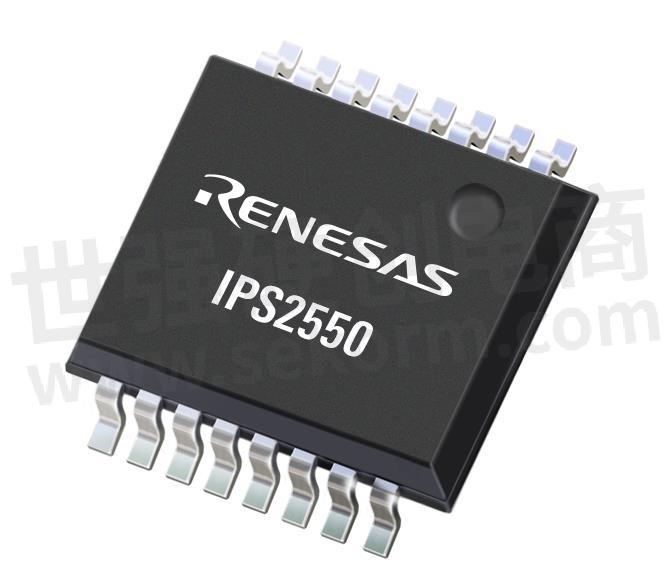IPS2550 Based Solution in Automotive Position Sensing, 100 times lighter than A Resolver Solution

The big automotive challenge for a cleaner future
CO2 footprint reduction requirements are pushing global transportation manufacturers to meet lower and lower emission standards and increase mileage through internal combustion engine efficiency improvements as well as moving to alternative power trains like hybrid or electrical vehicles.
These new kind of power trains have further increased the demand for electrical motors in the automobile industries. In particular, traction motors and starter generators are being added to devices already present in traditional cars, such as Electric Power Steering, motor pumps, park lock actuators and so on.
Available sensing options and their limits
Rotor position sensors are used to boost the motor performance, in closed loop systems This enables better torque control under all load conditions including start up. It provides a higher degree of precision in break and hold and better control of the motor at high speeds. This improves overall motor efficiency, reduces noise, vibration and reduces self-heating.
More specifically, these new sensors are called on to reduce the overall bill-of-material, increase accuracy, reduce weight and dimension. Stray field immunity is another crucial requirement to guarantee better motor integration as well as improve the sensor reliability, which are mounted in a busy electromagnetic environment. Obviously motor position sensors must be capable of working in a harsh environment characterized by high temperature, moisture, and dirt as well as guarantee long-life and durability in the system.
These days the automotive industry uses either magnetic position sensors, based on Hall or xMR technologies, or resolvers. Magnetic position sensors face accuracy limits for motors with a larger number of pole pairs and can only be used in end-of-shaft applications. Resolvers can support motor applications with a larger number of pole pairs as well as through-shaft mechanical embodiments, however they are very expensive, bulky and heavy.
A new era in motor commutation
The need for a solution that can be used at the motor shaft end as well as in through-shaft embodiments with high-accurate position measurement prompted Renesas to develop the IPS2550. This new innovative product is a high-speed motor position sensor with a sine-cosine output interface capable of supporting a maximum electrical rotational speed of 600krpm with an accuracy of 0.2% full scale. The sensor design is a standard 2-layer PCB the IPS2550, passive external components and a target metal piece to be attached to the motor shaft. The IPS2550 is based on the Eddy current measurement principle and uses a set of three coils: one transmitter and two receivers.
This solution is up to ten times thinner,100 times lighter and massively reduces the total bill-of-material over a resolver solution. By matching the number of sectors of the sensing element to the number of pole pairs an IPS2550 based solution can provide a state-of-the-art solution for motors with a large number of pole pairs, for which magnetic position sensors cannot be used. This revolutionary approach is a massive technical performance improvement boosting accuracy, reducing weight, space and overall system costs.
The challenge of the design of the sensing element
For Eddy current based sensors, like the IPS2550, the design of the sensing element is a critical task to be able to achieve good accuracy performance. Renesas has developed tools to support position sensing designs. In addition, Renesas has a Customer Reference Board catalog (CRB), comprising a large database of plug-and-play sensor designs for motors with different dimensions and number of pole pairs. Each of these reference designs can be requested in the form of Gerber files to be manufactured by the customer.

- +1 Like
- Add to Favorites
Recommend
- Renesas Expands Inductive Position Sensing Portfolio to Automotive Motor Commutation with IPS2550 Sensor
- Inductive Position Sensor IPS2550, The Ideal XEV Position Sensor for Resolver Replacement
- Renesas DSP Solution on Renesas Lab on the Cloud, Input Analog Signals Directly From A Signal Generator To The Rx231 Microcontroller Evaluation Board
- Renesas 48V Proof-of Concept (PoC) Solution for Checking and Identifying xEV System Level Requirements
- Renesa Introduced Its Next Generation ASIL-D SoC and New Automotive-Qualified Position Sensor
- Renesas‘ Semiconductor Manufacturing Factory (Naka Factory) Fire: Production Capacity Has Recovered to 88%
- Renesas Announces 10 New Winning Combinations Integrating Celeno and Renesas Products
- Nextron‘s Next-Gen High-Speed Connectors
This document is provided by Sekorm Platform for VIP exclusive service. The copyright is owned by Sekorm. Without authorization, any medias, websites or individual are not allowed to reprint. When authorizing the reprint, the link of www.sekorm.com must be indicated.





























































































































































































































































































































































































































































































































































































































































































































































































































































































